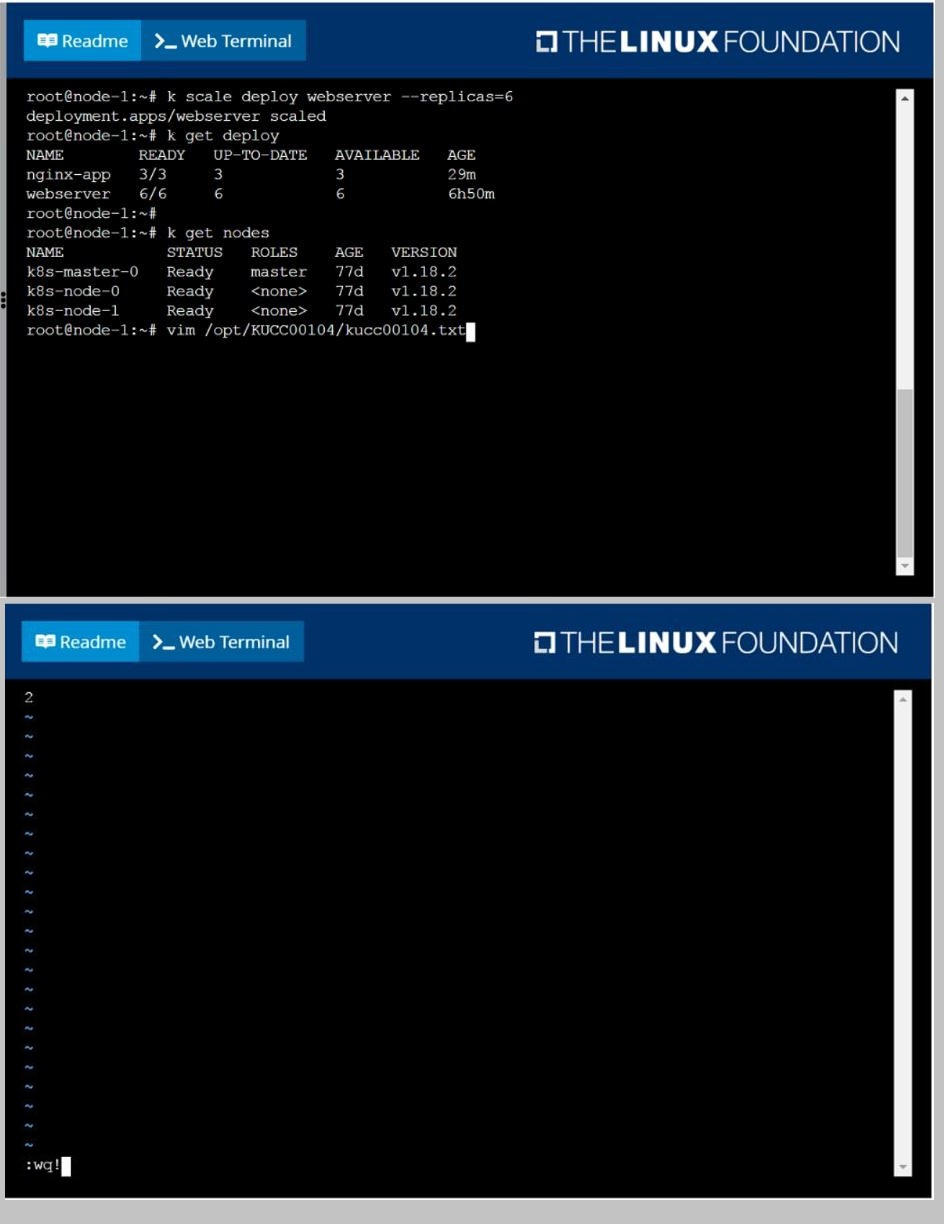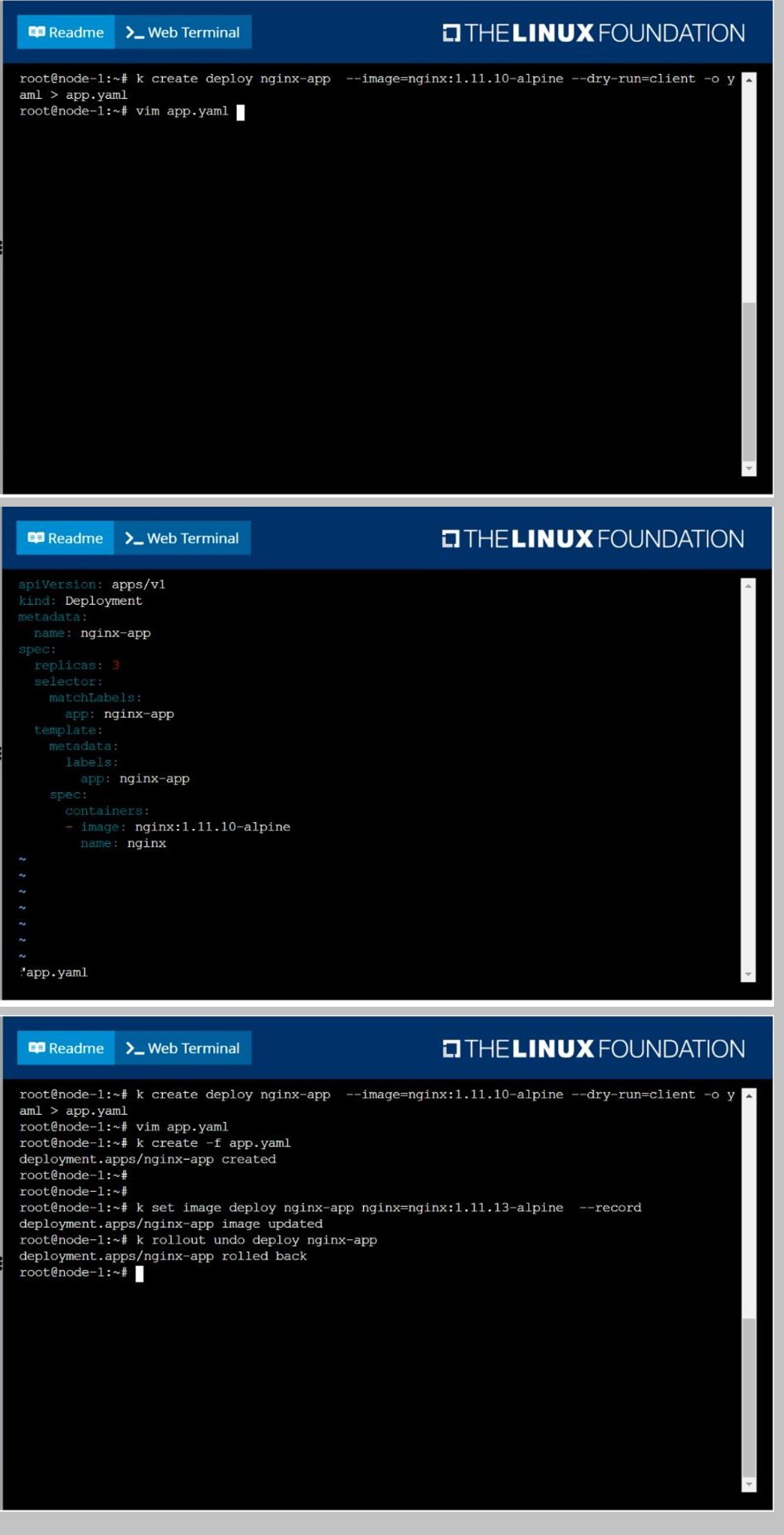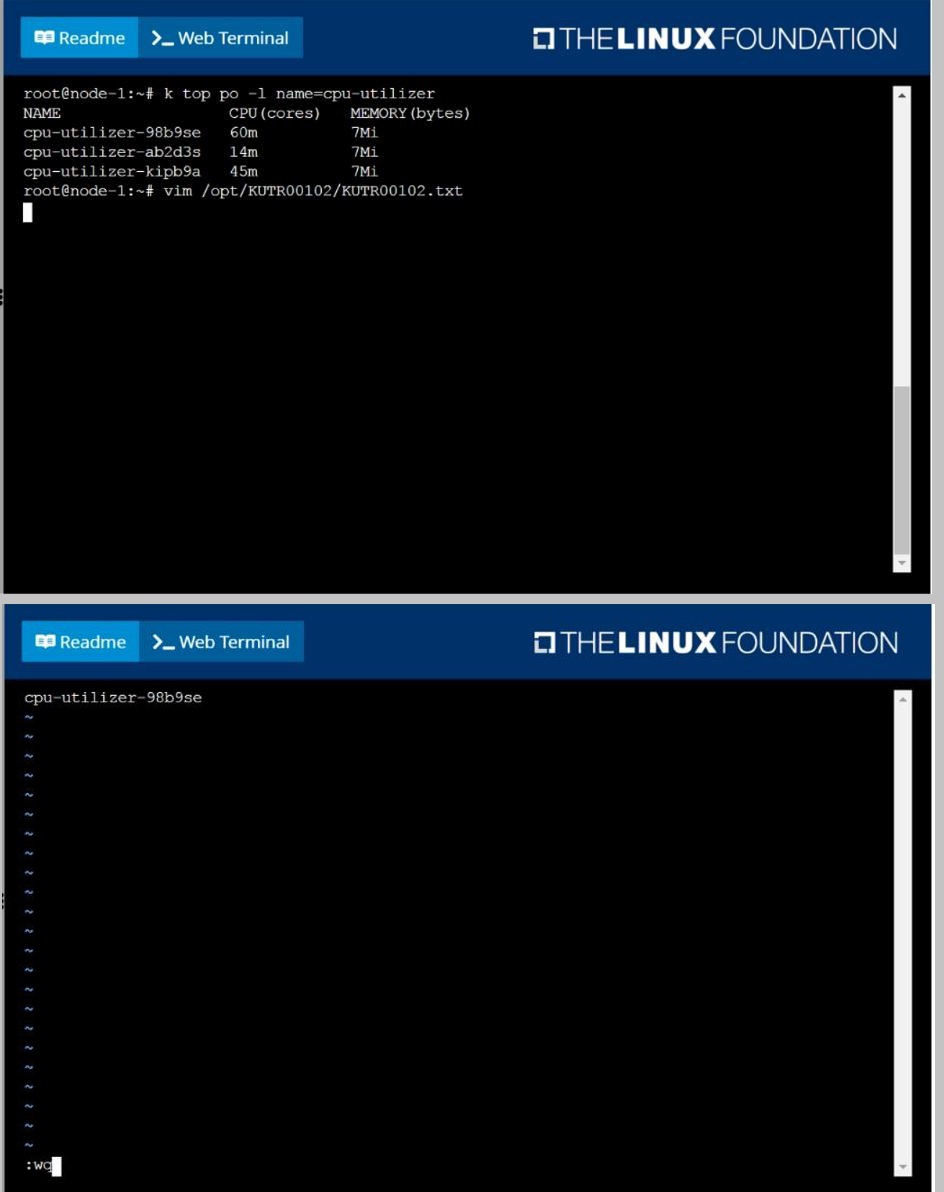
- Email support@dumps4free.com

Check to see how many worker nodes are ready (not including nodes taintedNoSchedule)
and write the number to/opt/KUCC00104/kucc00104.txt
Answer: See the solution below.
Explanation:
solution
Check to see how many worker nodes are ready (not including nodes taintedNoSchedule)
and write the number to/opt/KUCC00104/kucc00104.txt.

Create a deployment as follows:
Name:nginx-app
Using containernginxwithversion 1.11.10-alpine
The deployment should contain3replicas
Next, deploy the application with newversion1.11.13-alpine, byperforming a rolling update.
Finally, rollback that update to theprevious version1.11.10-alpine.

Configure the kubelet systemd-managed service, on the nodelabelled withname=wk8snode-
1, tolaunch a pod containing a singlecontainer of Imagehttpdnamedwebtool
automatically. Any spec filesrequired should be placed in the/etc/kubernetes/manifests
directoryon the node.
You canssh to theappropriate node using:
[student@node-1] $ sshwk8s-node-1
You can assume elevatedprivileges on the node with thefollowing command:
[student@wk8s-node-1] $ |sudo –i
Answer: See the solution below.
Explanation:
solution
From the pod labelname=cpu-utilizer, find podsrunning high CPU workloads and
write the name of the pod consumingmost CPU to thefile/opt/KUTR00102/KUTR00102.txt
(which already exists).

| Page 4 out of 13 Pages |
| Previous |